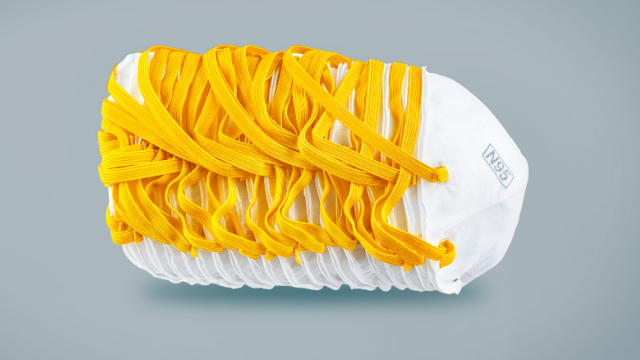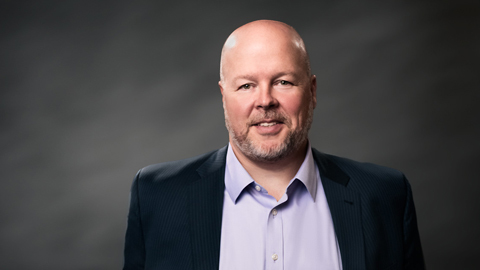A longtime leader in healthcare improvement, we’re developing new ways to revolutionize the industry.

Shortage or Not? The Balancing Act Behind the U.S. Supply of N95s

A recent New York Times article explored a head-scratching juxtaposition: Healthcare providers are rationing N95 respirators, seemingly because they are not easily procured, while some manufacturers have millions in inventory that they cannot sell.
How does such a market dynamic exist – particularly for a PPE product that was in such demand last year?
The short story is that the market for N95 respirators remains constrained but not in active shortage.
While healthcare providers are not actively lacking in N95s, they are all too aware that the slightest hiccup in COVID-19 caseloads, supply distribution or international logistics could deplete their N95 inventory overnight. This is particularly relevant right now, as there are global shortages of ocean freight capacity and port delays that could compromise the free flow of PPE, including N95 respirators.
Our members tell us they continue to work to increase their safety stocks, and any changes to current levels of supply and demand could quickly compromise this fragile market and bring us back to an acute shortage situation. This is why N95s remain on protective allocation from all the major manufacturers and distributors – and why healthcare providers are cautiously evaluating their conservation protocols.
As such, hospitals and health systems are not aggressively overbuying N95s, nor are they lifting their conservation and reuse protocols. The recipe is two parts steady state with a pinch of potential volatility.
Here are the dynamics behind N95 supply and demand today.
1. More Days on Hand of N95s – but Not Enough to Pull Back on Conservation
In April 2020, a Premier member survey found that most health systems had approximately 23 days of N95 supply on hand, and those with active COVID-19 patients had an average of just three days’ worth. Fast forward to this January and Premier data shows that the average member has 150 days of N95 respirators on hand – despite the fact that use of this supply has surged 500 percent since July.
Part of the reason for this is that healthcare providers have been following guidelines from the Centers for Disease Control and Prevention that allow for extended use and reuse. In addition, during periods of caseload decline, health systems have been able to build stockpiles of key supplies including N95s. While these trends are positive, current supply levels have not stabilized enough to accommodate pre-pandemic usage standards.
2. Increased Production
Since spring 2020, existing manufacturers have ramped up production and new entrants have had time to enter the market. For example, 3M reported in January that it has increased its annual production rate of N95s to 2.5 billion, a fourfold increase over its 2019 production.
Premier has sourced N95 masks from all across the globe, including many made in the U.S., to meet our member needs. Diversifying production to include more stateside manufacturers has been a significant move to ensure ample supply. In May, Premier and several of our members took a minority stake in Texas-based Prestige Ameritech, enabling them to increase production and provide added supply to our members. Prestige now makes 80 times more masks than it did a year ago, with approximately 9 million N95s (and 52 million other PPE products) shipping to Premier investors annually.
3. Fit Testing and Standardization
We’ve heard from many of our members that they don’t just want any N95; they want the ones that have been through their fit-testing process and approved for use in their facilities. Fit testing is a thorough process in which every employee tries on an N95 respirator to test the seal between the mask’s facepiece and the individual’s face. A fit test assures the mask fits and seals properly, such that potentially contaminated or infectious air cannot leak into the mask.
The fit test must be conducted using the same make, model and size of the mask that the worker will use on the job, and it takes 15 to 20 minutes to complete one fit test.
Changing to a different N95 supplier restarts the entire process. An employee who wears a small in one brand may wear a medium in another. Leaders at each facility and clinic must schedule employees to come in to conduct another fit test, while the supply chain must then monitor supply levels and standardize around an additional vendor. For some of our member health systems that have thousands of employees, this vigorous process requires immense resources and time.
4. An Inclination Toward Reliable, Known Companies
With the ongoing demands on healthcare providers to run teammate and community vaccination clinics and conduct routine and emergent care, many are choosing to standardize to the vendors they know, only turning to alternative suppliers if there’s a dire emergency. Providers often prefer to work with known companies that have established track records. This is especially true after the gray market proliferated in 2020, with a number of pop-up sellers and brokers hawking PPE – sometimes illegitimate or nonexistent – at a markup.
Premier manages $67 billion in supply spend for 4,100 hospitals and health systems across the U.S., and we view our no. 1 job as ensuring that our members have the supplies they need, when they need them at a price that is sustainable.
We put in place an expedited sourcing process early in the pandemic to quickly evaluate and source new suppliers, provided they were able to prove appropriate government licensure, send us their products to test for efficacy and meet our high standards for quality and fair pricing. Through this process, we evaluated 1,500 new vendors and put more than 100 on contract across all COVID-19-related supply categories – some in as little as two weeks. We also used this process to vet gray market suppliers, determining that fewer than 10 percent were legitimate.
At this point, Premier has eight N95 manufacturers on contract. Purchasing off our contracts is purely voluntary – our members choose to use our contracts because they offer attractive pricing and convenience, but they are free to vote with their feet and buy anywhere. But to avoid getting burned, we’re finding many providers today are opting to stick to trusted, vetted companies for supplies – only looking for alternatives during severe shortage periods.
While the current supply and demand dynamics are positive, we need to be careful about being too optimistic.
There is enough supply in the hospitals to meet current demand and safety stock inventories are increasing to reasonable levels, but there’s not enough inventory on hand yet for most providers to feel out of the woods.
Premier continues to work with proven and new suppliers who meet our standards to enable access to critical supplies during the pandemic and beyond. Learn more about how we’re responding to the pandemic and bringing more resiliency into the supply chain in 2021.


